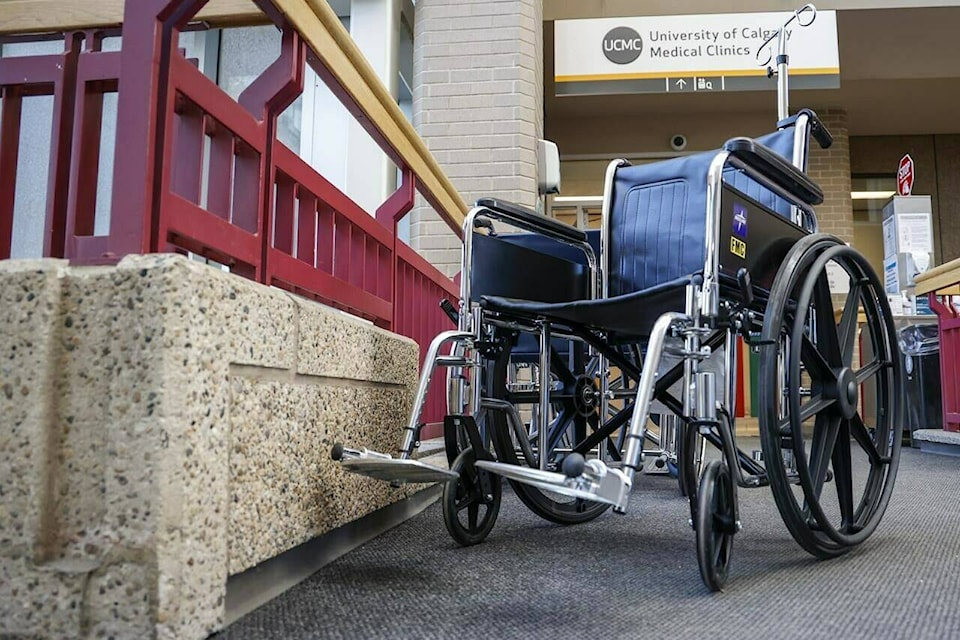The number of Canadians with at least one disability has doubled in ten years, a reality that should push governments to help reduce barriers to accessibility, says the head of a human rights organization.
Statistics Canada data shows that 27 per cent of people 15 and older ���߲��о���� about eight million Canadians ���߲��о���� reported having at least one disability in 2022, about twice the percentage of people who reported a disability 10 years ago.
Collected every five years, the StatCan numbers are important because they influence government policy at the federal, provincial and local levels, Heather Walkus, national chair of the Council for Canadians with Disabilities, said in a recent interview.
���߲��о����At least eight million Canadians have a disability and we are still excluded, not able to join in with families and be part of the Canadian experience because of environment, because of attitudes, and because of the way the system is set up to ensure there���߲��о����s no success or little success,���߲��о���� Walkus said.
Of the millions of Canadians with a disability, 72 per cent reported having encountered some form of barrier to accessibility within the last year; 60 per cent of the eight million said they had experienced barriers navigating indoor and outdoor public spaces.
Walkus, who describes herself as having ���߲��о����very low vision,���߲��о���� said much needs to be done to ensure everyone can navigate public spaces.
For example, when she recently attended a conference on disabilities in Ottawa, she was unable to use the hotel���߲��о����s elevators. The buttons did not have raised lettering or braille, and riders were alerted by flashing lights when an elevator became available ���߲��о���� leaving her unable to know when a cabin arrived. Inside the elevator, its sound system was ���߲��о����so muffled���߲��о���� she could not hear what floor she was on.
���߲��о����I couldn���߲��о����t even get up an elevator in 2023,���߲��о���� she said.
���߲��о����That���߲��о����s what people need to understand,���߲��о���� Walkus added. ���߲��о����We have ability, we want to live our lives, but we���߲��о����re somehow still separated.���߲��о����
The year 2022 marked the first time Statistics Canada���߲��о����s national survey included questions on barriers to accessibility, Susan Wallace, an analyst with the agency and manager of the Canadian Survey on Disability, said in an interview. The survey, she added, asked people about 27 different types of barriers, involving building entrances, lighting or sound levels, public sidewalks, among others.
Accessibility problems span the country: a recent report from a University of Calgary-led project found that nearly 60 per cent of public spaces in Calgary, Vancouver and Ottawa are either inaccessible or partially inaccessible to disabled people. Called ���߲��о����Mapping our Cities for All,���߲��о���� the project���߲��о����s goal is to help the federal government meet its goals of removing barriers for people with disabilities by 2040.
Walkus said Canada must also address the financial strain of those trying to sort out details of the long-awaited Canada Disability Benefit Act, which became law in June 2023. The benefit is aimed at reducing poverty and supporting working-age people with disabilities through income supplements. Online consultations for the benefit opened Nov. 15 and close Dec. 21.
���߲��о����The good thing is that it���߲��о����s coming. The bad thing is we���߲��о����re not quite sure when and how that will roll out,���߲��о���� Walkus said.
Wheelchairs, talking-program computers, and many other support technologies are expensive, Walkus said, adding that it���߲��о����s becoming increasingly expensive to find accessible housing. ���߲��о����People need to understand that having a disability is not cheap.���߲��о����
The number of Canadians with disabilities in 2022 was up by five percentage points since the last survey in 2017, when 22 per cent of Canadians, or 6.2 million people, reported having at least one disability. Statistics Canada said the increase can be attributed to the aging population and the rise in mental health-related disabilities among youth and work-age people.
The most common disability type is pain-related, at 62 per cent, followed by issues linked to flexibility and mobility, which is on par with results from 2017. The next most common disability is mental health-related, at 39 per cent ���߲��о���� the largest increase in disability type between 2017 and 2022. The last survey found that 33 per cent of people with a disability reported that it was mental health-related.
READ ALSO:
READ ALSO:



